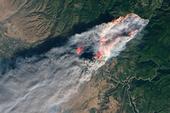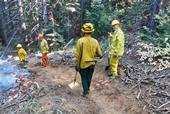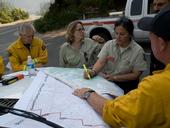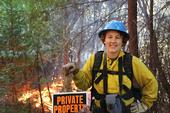- Author: Jeannette E. Warnert

For millennia, fires periodically burned through California forests, thinning trees, reducing shrubbery and clearing out downed branches and debris. Without periodic fire, the forests became more dense, with spaces between large trees filling in with a thick carpet of duff, seedlings and shrubs.
As a result, today's forests are prone to more intense and damaging fires, like the Rim Fire, King Fire, and — most recently — the Camp Fire in Butte County. These fires are burning with unprecedented severity and speed, threatening large swaths of forest, towns, and even urban areas.
Using fire as part of forest management is not a new concept. Native Americans...
- Author: Susie Kocher
- Author: Rob York
- Author: Lenya Quinn-Davidson

The humble rake has been in the spotlight in recent weeks, and its role as a forest management tool ridiculed and scorned. However, most fire professionals believe rakes are a necessary part of saving California's forests.
Those who are familiar with fire are undoubtedly familiar with the McLeod, which is a standard firefighting tool and … it is essentially a rake (one side is a rake with coarse tines and the other side has a flat sharpened hoe). The McLeod was created in 1905 by a U.S. Forest Service ranger who wanted a single tool that could rake fire lines (with the teeth) and cut branches and roots (with the sharpened hoe edge). The McCleod is used to scrape fuels...
- Author: Jeannette Warnert

The California Natural Resources Agency released California's Fourth Climate Change Assessment today (Monday, Aug. 27), at http://www.ClimateAssessment.ca.gov. UC Agriculture and Natural Resources scientists contributed substantially to the report.
The Fourth Assessment is broken down into nine technical reports on the following...
- Author: Pamela Kan-Rice

Workshop aims to spark women's ambition to become leaders in fire management
Shortly after her son was born, Jeanne Pincha-Tulley was promoted to fire chief of a national forest. For the first six months, she brought the baby to work.
“Most of my colleagues were men between 40 and 50. I was 31,” recalled Pincha-Tulley, who was the first woman to achieve the rank of U.S. Forest Service fire chief in California. “My second son was 6 weeks old and nursing. They had no idea what to do. They absolutely freaked out.”
While great efforts are being made to recruit women into fire management, women hold only 10 percent of...
- Author: Lenya Quinn-Davidson

On Monday, Oct. 17, participants will gather in northwestern California for the first-ever Women-in-Fire Prescribed Fire Training Exchange (WTREX). The 12-day hands-on prescribed fire training, modeled after similar TREX events that take place across the country, will include participants with a full range of fire qualifications—from beginners to seasoned professionals—and from a diversity of backgrounds, including federal and state agencies, non-governmental organizations, tribes, universities, and more.
Participants are traveling from 12 different states and four countries, and will include 38 women and six men. This event will transcend the usual TREX emphasis...



